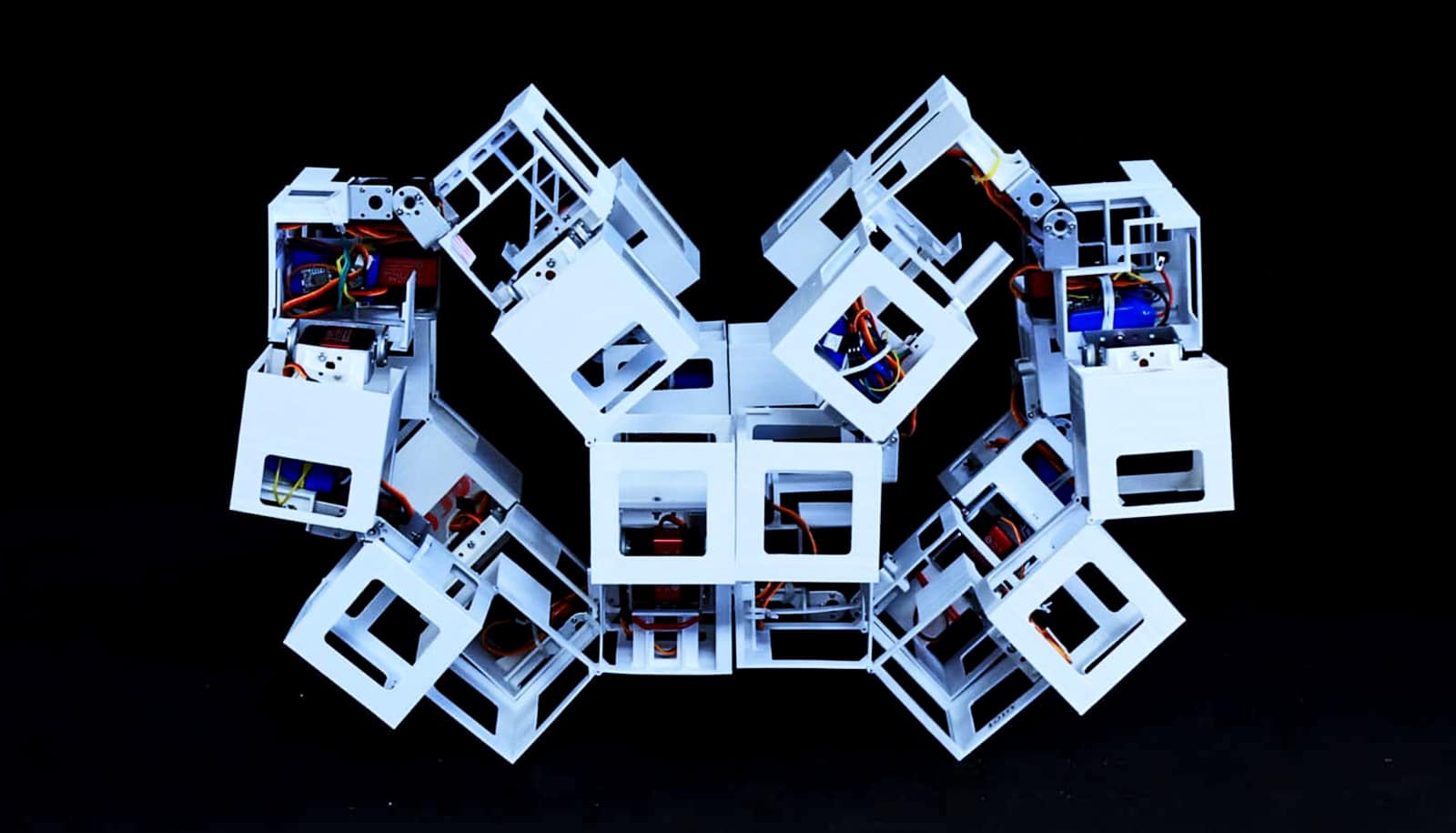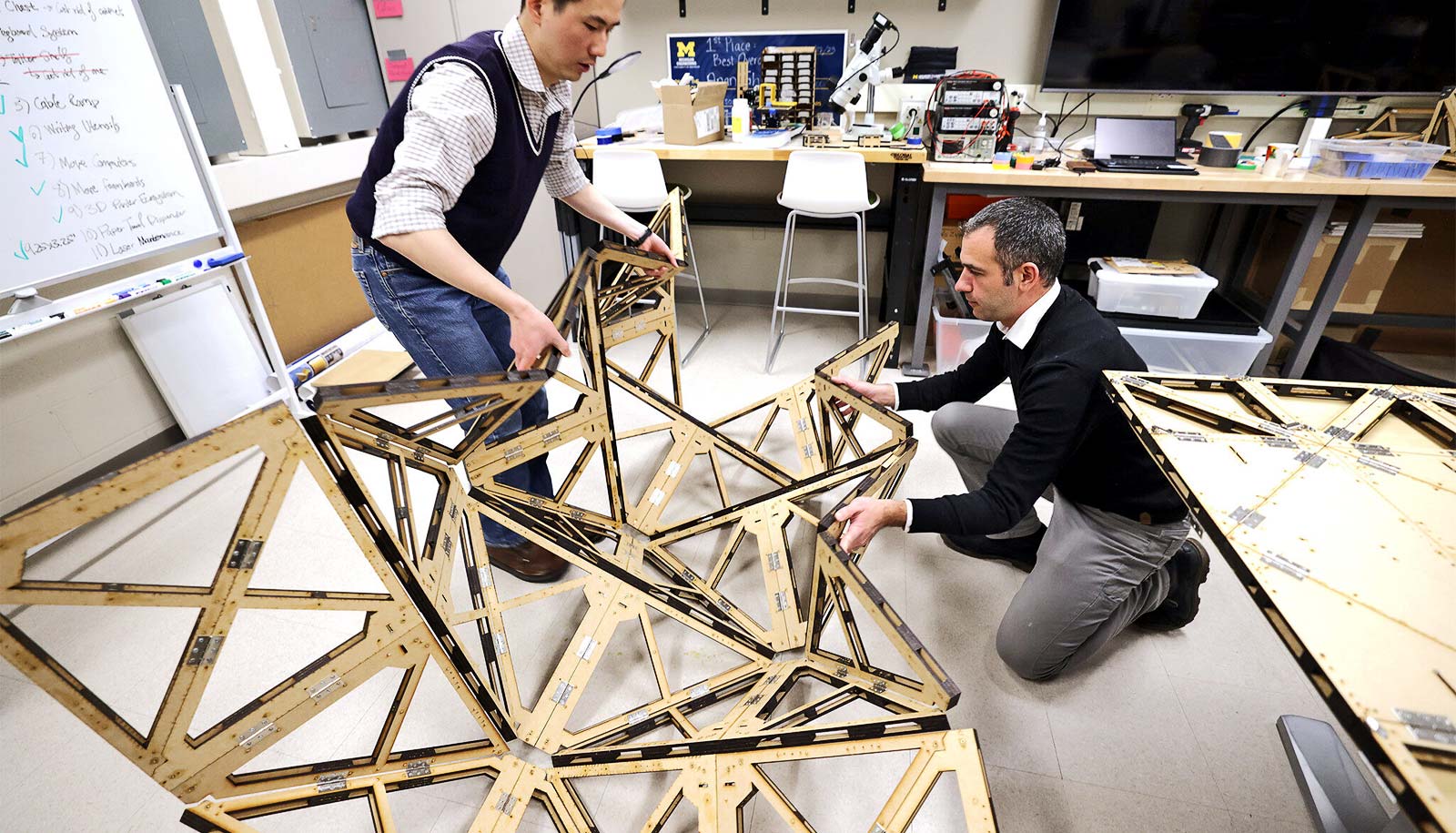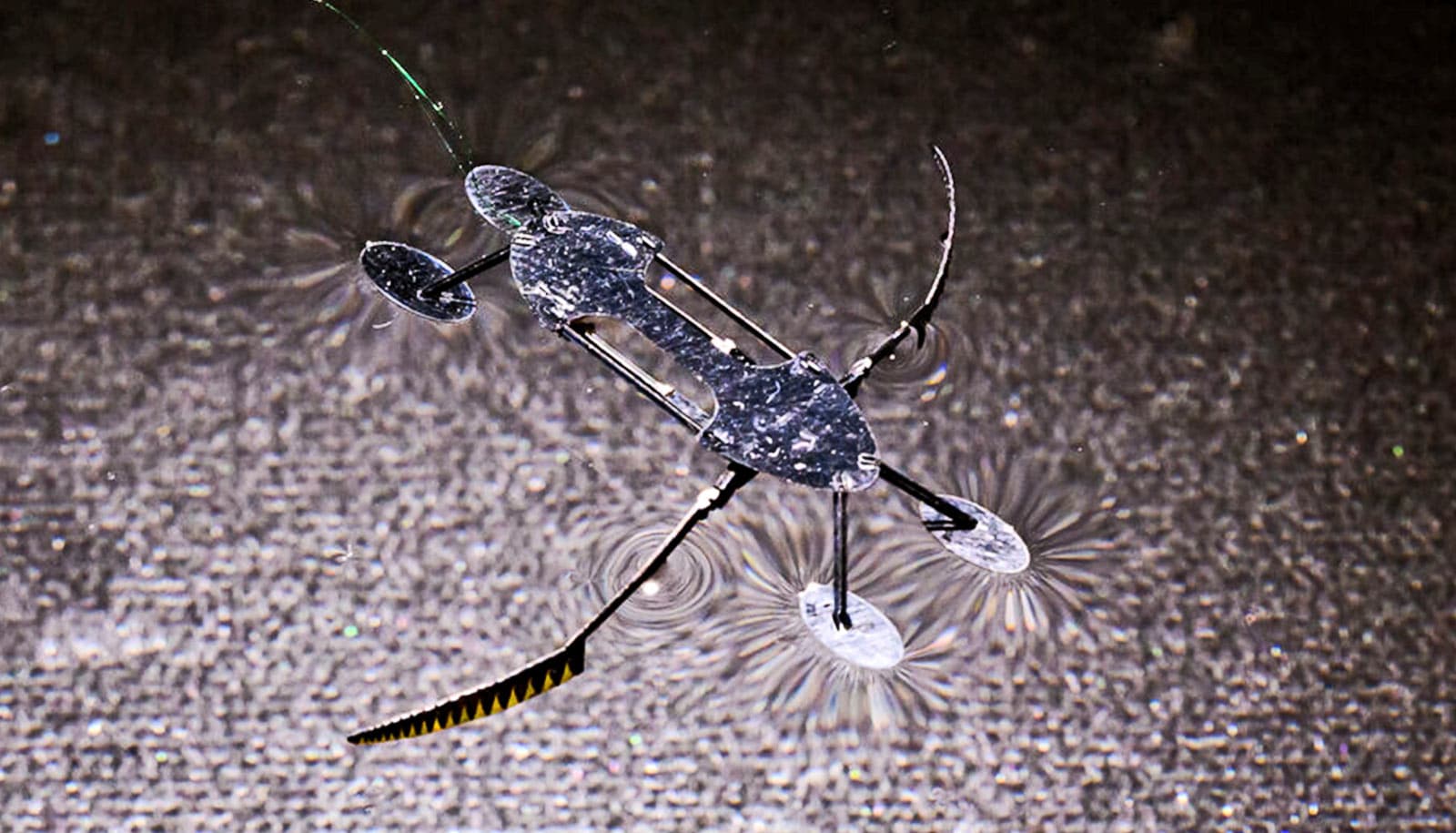Inspired by the paper-folding art of origami, engineers have discovered a way to make a single plastic cubed structure transform into more than 1,000 configurations using only three active motors.
The findings could pave the way for shape-shifting artificial systems that can take on multiple functions and even carry a load—like versatile robotic structures used in space, for example.
“The question we’re asking is how to achieve a number of versatile shapes with the fewest number of actuators powering the shape shifting,” says Jie Yin, associate professor of mechanical and aerospace engineering at North Carolina State University and co-corresponding author of the paper describing the work in Nature Communications.
“Here we use a hierarchical concept observed in nature—like layered muscle fibers—but with plastic cubes to create a transforming robot.”
The researchers created hollow, plastic cubes using a 3D printer and assembled 36 of them together with rotating hinges. Some hinges were fixed with metal pins while others were activated wirelessly with a motor.
The researchers were able to move the cubes into more than 1,000 shapes using only three active motors. Those shapes included tunnel-like structures, bridge-like structures, and even multi-story architectures.
The untethered transformer bots can move forward, backward, and sideways—without feet—merely by controlling the ways the structure’s shape changes. The bots can also transform relatively quickly from flat, or fully open, to a boxlike larger cube, or fully closed. The bots also can carry a load about three times their own weight.
Next, the researchers will attempt to make the transformer bots even better.
“We want to make a more robust structure that can bear larger loads,” says Yanbin Li, a postdoctoral researcher and co-corresponding author of the paper. “If we want a car shape, for example, how do we design the first structure that can transform into a car shape? We also want to test our structures with real-world applications like space robots.”
“We think these can be used as deployable, configurable space robots and habitats,” says Antonio Di Lallo, a postdoctoral researcher and co-first author of the paper. “It’s modular, so you can send it to space flat and assemble it as a shelter or as a habitat, and then disassemble it.”
“For users, it needs to be easy to assemble and to control,” Yin says.
The National Science Foundation funded the work.
Source: NC State



